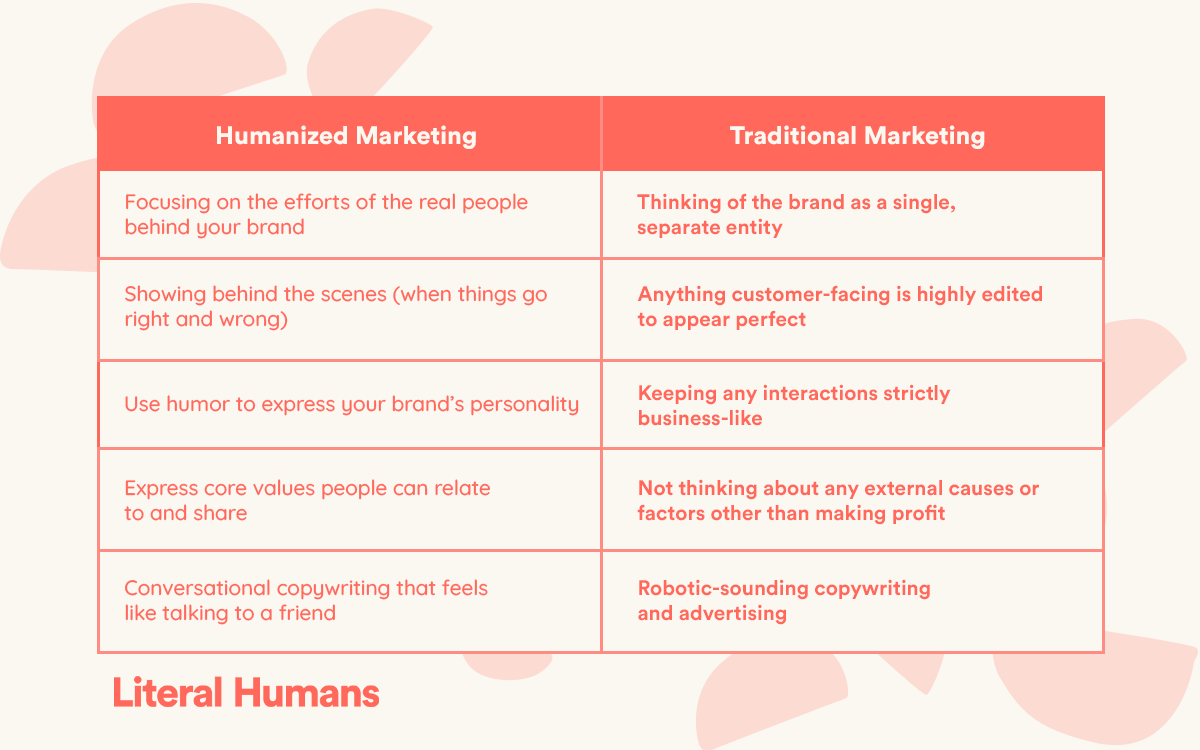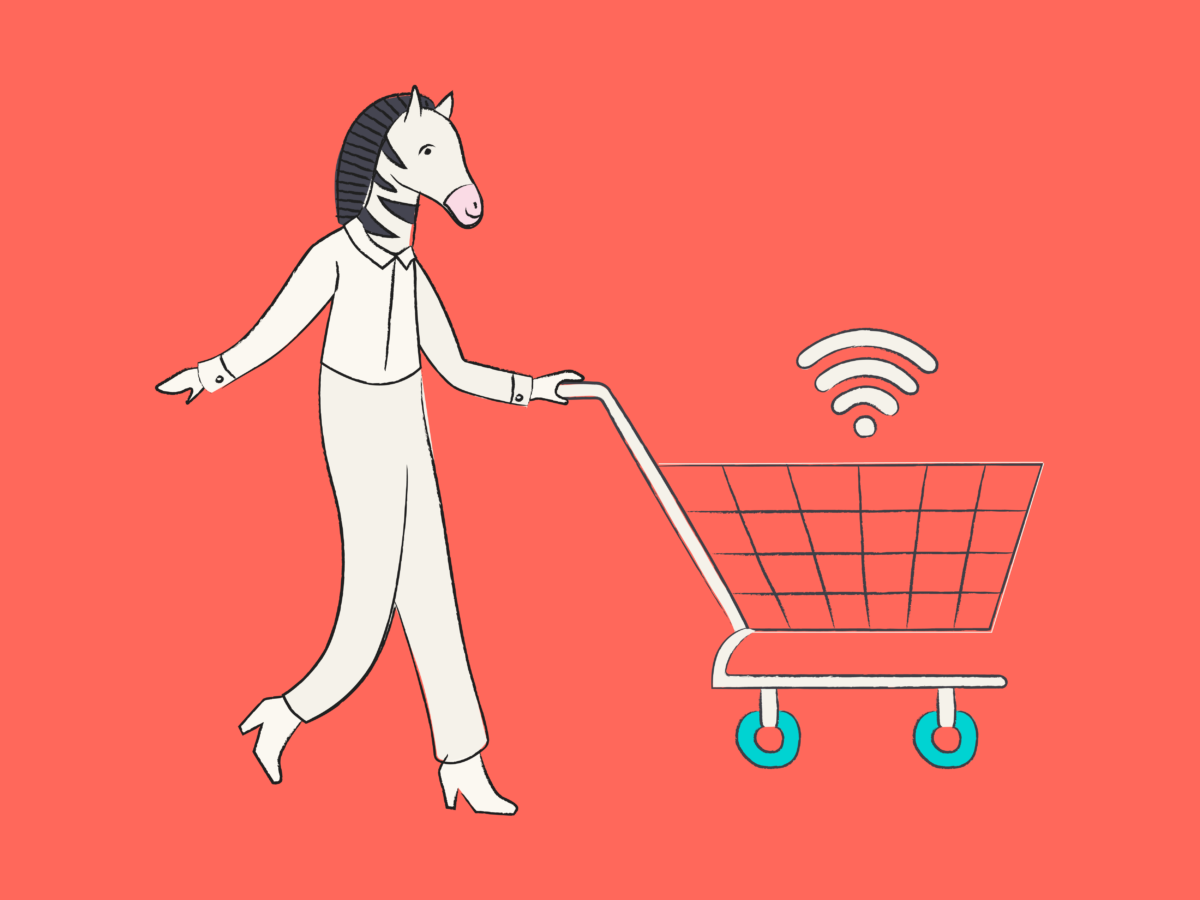Humanized marketing isn’t about looking perfect. You shouldn’t be persuading people to buy your product or sign up for your service. You want them to be persuaded by the way you market it.
Too many businesses put the focus on themselves. When they should really be focusing on the value they can provide. I don’t want to hear about what your product does and why it’s so great. I want to know how it’s going to make my life better.
Humanizing marketing means embracing your flaws. Breaking the rules to sound human. That way, your message resonates with people.
So, here’s how to stop convincing and start connecting.
What does humanizing marketing look like?
People are drawn to people. Not brands. Case in point? It took Watford football club ten years to get to 170k YouTube subscribers. It took their goalkeeper only one year to hit a million.

It can be easy to fall into the trap of faceless digital marketing efforts. But online is where you need the human element most. It’s how your brand will stand out in a sea of mediocrity.
The most memorable people have unique personalities. You just need to think of your business in the same way. So, what does humanized marketing look like? How does it compare to more traditional types?
Here’s a quick comparison:

Now, I’m not saying all traditional marketing is like this. I’m just being extreme to make a point. Marketing campaigns have to be creative and engaging. Otherwise, no one would buy what they’re selling. Right?
But being creative doesn’t build connections with your target audience. And that’s what we’re looking for. Providing a customer experience that’s based on real, meaningful relationships.
Personalizing vs. humanizing
Personalization can appear humanizing. You know someone’s name, location, and purchase decisions. But this can all be purely data-driven and automated. For large companies with thousands of customers, it needs to be.
Personalizing email marketing is all the rage. It’s a way of using individual data to suggest the most relevant buying choice or to drive a specific intent. And it works. Because it feels like a more tailored service. Like the company “knows” you. So then you’re more willing to proceed.

Humanization takes things a step further. It’s not just about knowing a few details about someone. It’s about building trust in your relationships with your customers. To the point that they know and believe your business actually cares about them. That every decision is mutually beneficial.
That doesn’t mean you can’t use technology to help humanization. In fact, it can enhance customer experiences. But it does mean you need to look out and listen for the unexpressed needs of your target audience. So you can meet them before they have to ask.
The Ritz-Carlton is known for its exceptional service. After finding out about Paul Greenberg’s trip itinerary, Guest Relations staff member Cassidy left this complimentary CD and handwritten note in his room.

And this was only one example of many from the same trip. If you can bring the personas of your team members to the forefront, these are what people truly connect with. So, let their voices be heard. Plus, make sure to keep them happy, so they’re always able to provide top-tier service.
Try to make the whole experience warm. Do things that are unexpected for customers based on their unique personalities and what they like. Wondering how you find out that information? Try asking.
Build trust with your content marketing strategy
How do new customers find you? Unless you’re paying for ads, it’s likely through your content. This can be the first touchpoint a lot of users have. So, what impression are they getting from it?
Are you writing dull, stuffy blog posts just because you know you should be? Are your ads generic and soulless? This is an easy way to look distant and uncaring about people.

Humanizing marketing strives to be the opposite. Here are a few tips to put into action:
- Show a range of emotions
- Have a stance on important topics
- Share stories
- Shoot lots of video
Show a range of emotions
Companies may not have feelings, but people do. Trust is a powerful one. And people reward trusted brands with advocacy (61%), purchase (57%), loyalty (43%), and engagement (31%). But it isn’t easily earned.
You need to give potential customers a reason to trust you. And that involves being vulnerable. Tell your audience when things go right. Share your happiness. But on the other hand, let them know when things go wrong.
This UK pet brand shared the news of a recent fire that destroyed one of their warehouse locations:
View this post on Instagram
Rather than focusing on the (huge) negative, they turned the experience into a shout-out for the brave firefighters attending. The post has the highest engagement out of their whole Instagram feed by far. Because finding hope in a dire situation is one of the most human qualities you can capture.
Dogs and other animals usually star in JR Pet Product’s content. But they also regularly share what their human team members are up to and what they’re working on:
View this post on Instagram
These behind-the-scenes pics aren’t overly edited or staged. They feel natural and relatable. Plus, they usually get a dog involved too. And who doesn’t love dog content?
Have a stance on important topics
Traditional marketing used to stay well away from social causes and divisive issues. But nowadays, people expect brands to have an opinion. The Black Lives Matter movement is one of the most widely discussed. And Nike made sure they had their say:
Let’s all be part of the change.#UntilWeAllWin pic.twitter.com/guhAG48Wbp
— Nike (@Nike) May 29, 2020
Humanized marketing means sharing the social causes you support. But there also has to be meaningful action supporting your words. Nike’s Chief Executive promised in a letter to staff at the time to increase diversity within the workforce. Plus, outlined $40 million initiatives to support black communities.
Yogurt brand Yoplait tackled a different topic, creating ads that faced “mom-shaming” head-on. It’s not a trending issue or one that’s suddenly popular. This is a constant underlying judgment toward moms that goes on everywhere:
You don’t need to be controversial to stand up for your beliefs. Just show your values align with your target market’s. That’s how to forge lasting connections.
Share stories
Humans connect by telling and listening to stories—in every culture and at any age. They engage our brains and make us feel. And emotions are the basis of 80% of the decisions we make in a day. So, emotive storytelling content can spark both conversation and action.
Something to always remember—your content shouldn’t focus on selling. Provide the value upfront without asking for anything first. That’s how you’ll earn more trust more quickly. You should be trying to figure out the type of stories that move your customers and create more of them.
Sharing human stories in marketing can take a few forms. You can ask for testimonials. Use case studies from your users and customers. Or try user-generated content (UGC). Skype does the latter brilliantly by turning real user experiences into ads:

It’s clever because it makes the reader the main character. Encouraging them to jump into the story and connect with other real users across the world. It shows the value of their service without shouting about its benefits. If a huge corporation like that can humanize their marketing, we all can.
Shoot lots of video
People are watching more videos than ever before. And this type of media shows us in our unedited, natural form. (Top tip: steer clear of apps that do otherwise.)
It doesn’t have to be a polished, highly-edited version, either. The more realistic, the better. You want to show your audience your company in a way no one else can. Hand over the mic (and phone) to your frontline staff.
Like retailer Next:
Or give your leaders a shot. Gymshark CEO Ben Francis dedicates his YouTube channel to behind-the-scenes footage of the brand and his daily life:
Podcasts can also be a great option if you’re not keen on video. These let your audience audibly connect with the humans behind your brand and can get across humor and personality. Just make sure you have topics worth talking about and a theme with longevity.
Humanizing your brand on social media
Social media is one of the most popular ways to humanize your company. Because it’s just that—social. Some of the biggest brands have created completely new personalities on these platforms.
It’s not just for DTC (direct-to-consumer) companies either. B2B marketing has to work harder to show the human beings behind brand accounts.
Wendy’s is one of the most well-known examples. They’re sarcastic, sassy, and don’t follow the rules of what a corporation on Twitter “should” be like. They’ve set a new benchmark:
Dropped a Spicy Nugget under the front seat one time, but it’s gone now. Not because someone (not me) got out of the car and got down there and found it and ate it…because that definitely didn’t totally happen.
— Wendy’s (@Wendys) April 14, 2022
If you’re a solo CMO, get your voice across. Not your constructed “business-like” one. How you actually talk. You can still strike the balance between being personal and professional. LinkedIn is the go-to place for entrepreneurs. But you could try something different, like TikTok.
Influencers are another way of giving your brand a human element. Celebrity endorsement for retailers was first. Then influencers shot up in popularity because they were “real people” that made brands relatable. But what about spotlighting the humans behind your company instead?
Don’t get me wrong, influencer marketing campaigns can still be great to run alongside a long-term strategy of humanizing your brand. But for those to work, you need to give them creative control. And that way, they’re getting their personality across. Not your brand’s.

Forbes has some tips to start implementing this strategy:
- Define your brand’s personality – get down to the nitty-gritty (what kinds of things would your brand do, eat, or listen to if it was a human?)
- Show off your team – who are the people behind your brand and how do you all interact?
- Respond to customer posts in a human way – thank your audience for positive comments, and don’t send automated replies.
- Be consistently unique – surprise people and make them feel like they’re talking to a friend.
Automation is really handy for social media. But one of your main marketing goals for social media should be to be present. Get involved in trending topics and conversations as they happen. Comment on your customers’ content. Be a genuine member of the community.
That’s how to humanize your brand on social media. Simple, eh?
Using conversational copywriting
We’re all taught in school to write academically. Long sentences, big words, plenty of punctuation. Conversational copywriting forgets all that. It’s meant to stick to the point. Keep it casual. Be funny (if you can.)

You can still make “on brand” conversational copy even in a more traditional industry. It doesn’t mean being any less professional. Just more relatable. If you can make anyone understand a complex topic using simple language, you’re nailing it.
Here are 5 strategies for newbies to this style of writing:
- Drop the jargon – fancy terminology won’t impress (it’ll confuse)
- Choose a brand voice – craft something memorable and unique
- Don’t follow the crowd – try something no one else in your industry is doing
- Study social media – look at how your target audience speaks and copy that
- Practice makes (almost) perfect – humans aren’t perfect and your writing shouldn’t be either

Being imperfect doesn’t mean writing with tons of typos. It means breaking the rules of usual grammar and punctuation.
It doesn’t mean being fake, either. Genuine connection doesn’t come from trying too hard. It comes from keeping it real.

So, put the human back into your copywriting. And start providing an experience most brands aren’t.
Humanizing marketing can’t be an afterthought
Humanizing marketing shouldn’t be a one-off thing. It should be baked into your entire strategy. Customers don’t just buy products anymore. They care about the whole experience with a company—online or off.
What makes each of your customers tick? How can you use that information to create an experience none of your competitors can match? How can you make your employees happier, so they’re providing the best service? These are the questions you need to ask yourself.
Your humanized marketing strategy starts now. And it shouldn’t ever end. It’ll just get better and better.









